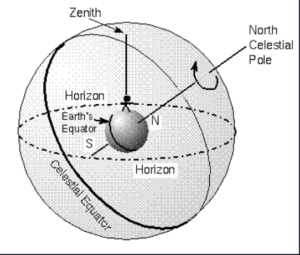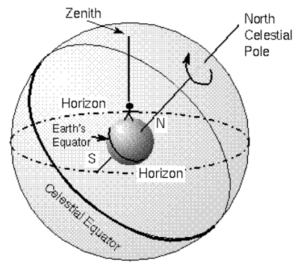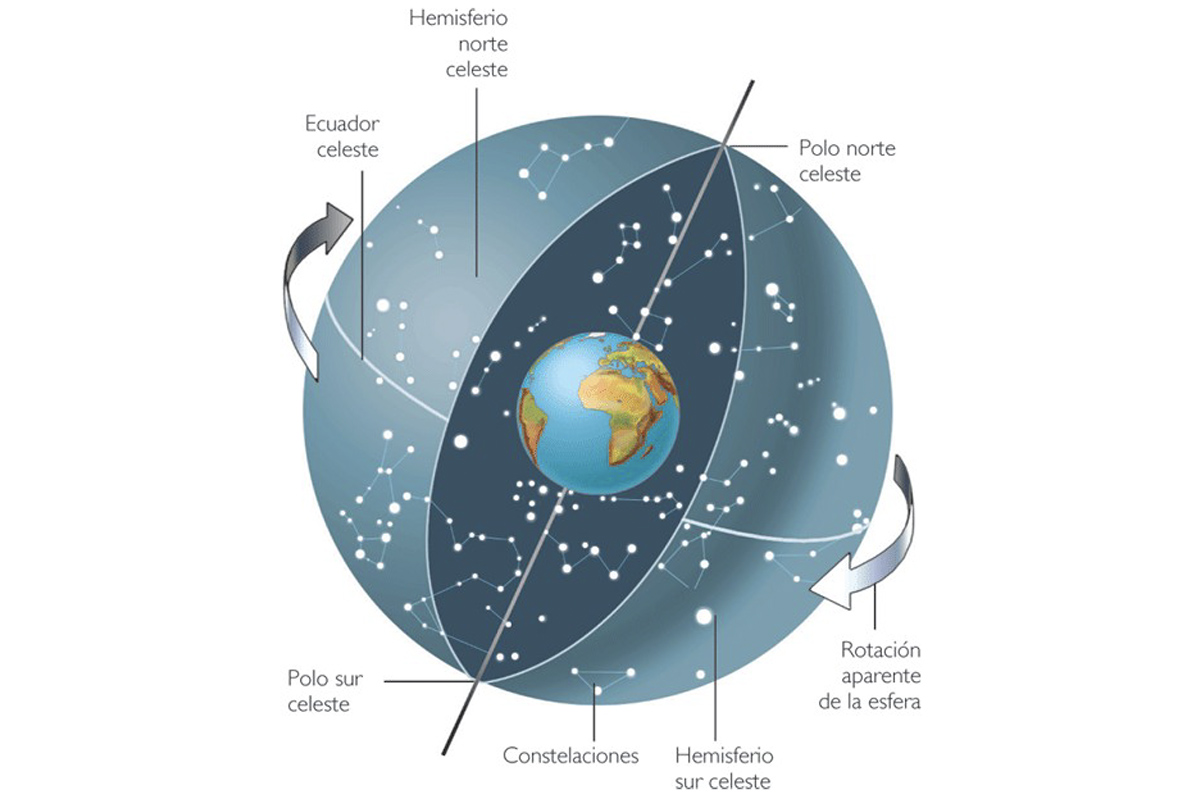A key concept to orient yourself: the celestial vault.
Understanding the celestial vault is essential to be able to correctly imagine what is happening in the sky, as well as to have the appropriate notions in application cases (e.g. astrophotography).
Depending on our latitude, then, we will see the stars move differently in the sky, as will be explained in the following examples:
If you were at the North Pole (90º N) all the stars will appear to be rotating around the north celestial pole towards the zenith (just above your head), and during the night the stars never rise or set.
If you were at the equator (0º), you will be aligned perpendicular to the Earth's axis of rotation. From your point of view, the stars move in a straight line, rising from the East, moving and setting in the West. The celestial poles will be exactly at the level of the North and South horizon.
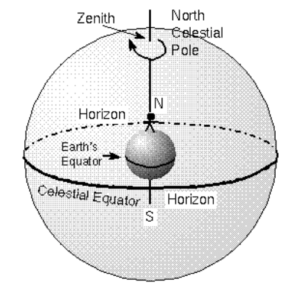
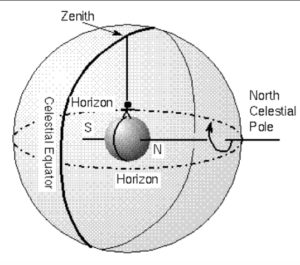
If you were in Seattle (47º N) all the stars now appear to revolve around a point located 47º above the horizon in a northern direction.
If you were in Los Angeles (34º N), all the stars now appear to revolve around a point located 34º above the horizon in a northern direction. The celestial pole (North or South) will be located a number of degrees above the horizon equal to your latitude (North or South) on Earth.
